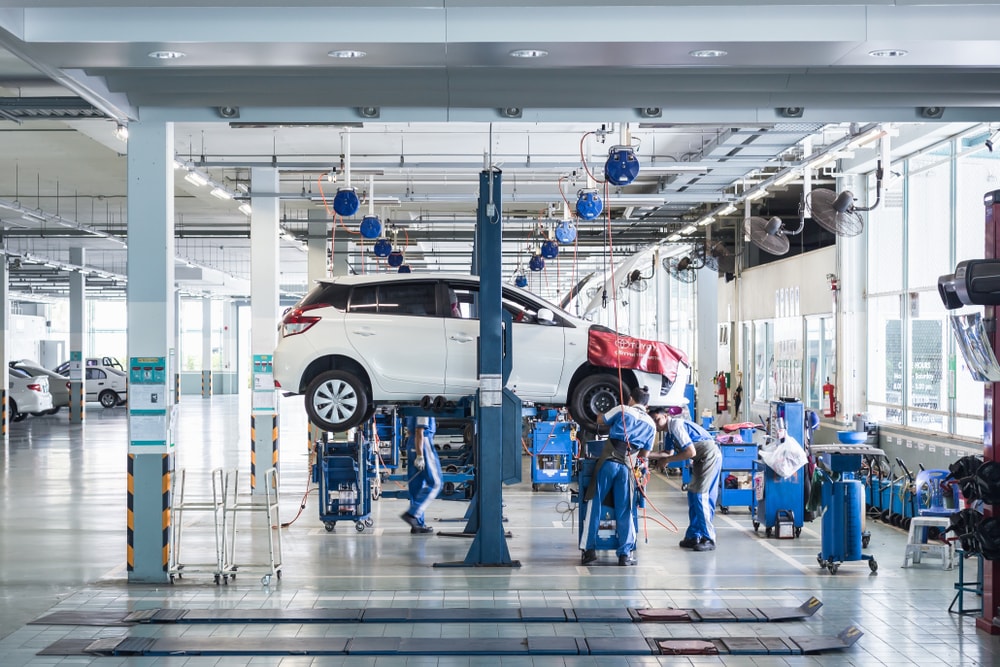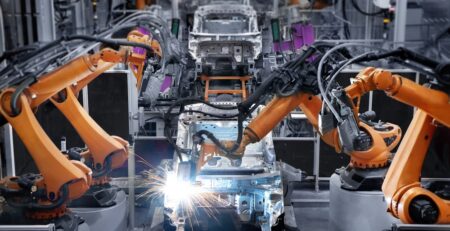The Top 6 Challenges That Automotive Dealerships Face Today
Influenced by evolving consumer expectations and the digitization of the service process, automotive dealers are facing the need to pivot their operational structures. The retail experience is rapidly changing, and consumers today are more informed and empowered to shop around for the best value.
Potential buyers are no longer only looking for fair prices but are also putting more emphasis on the overall purchase experience. In this article, we address some of the biggest challenges that car dealerships face today. Within these challenges, we see an opportunity for dealers to identify constraints in the traditional model and discover new ways to improve their Dealership Management System processes and adopt an efficient digital environment.
1. Digital Transformation and Online Competition
The digital revolution has transformed the way consumers shop for cars. Online automotive marketplaces, direct-to-consumer sales models, and virtual showrooms have intensified competition for dealerships. Adapting to this digital shift requires dealerships to invest in robust online platforms, seamless customer experiences, and personalized digital marketing to stand out in a crowded virtual marketplace.
Today’s customers no longer rely solely on visiting physical dealerships to make their buying decisions; instead, they turn to online platforms, marketplaces, and virtual showrooms for a convenient and personalized shopping experience. As a result, automotive dealerships face increasing challenges to adapt to this digital shift and remain competitive in the fast-paced online landscape.
The digital transformation and online competition present both challenges and opportunities for automotive dealerships. By investing in robust online platforms, providing seamless customer experiences, implementing personalized services, embracing online vehicle sales, and integrating virtual showrooms, dealerships can navigate this new landscape successfully.
2. Supply Chain Delays
This issue can be felt across a number of industries. For the automotive industry in particular, new and used vehicles, vehicle parts for the service department, value-added products to enhance the customer experience – all of these are inventory that flows in and out of dealerships daily. To combat supply chain issues, dealerships must be on top of their inventory management system.
Some of the challenges that dealerships face with inventory issues include:
- Lost opportunities with the inability to fulfill customer orders
- Excess inventory ties up capital and eating up space
- Not reaching the dealership’s true profit margin potential
- Lower customer satisfaction as they wait longer for their vehicle to be service
Effective inventory management in the automotive industry looks at historical data combined with real-time information on quantities for more accurate demand planning. This avoids the scenario of holding obsolete inventory and increases a company’s profit potential.
Workflow 360˚’s Production Efficiency Platform works with an existing Dealership Management System and can help lower the cost of inventory and production with:
- Real-time Reporting – From the sales team inquiring about a vehicle to communication between service technicians and the parts department, updates in real-time ensures that everyone connected to the RO is in the know with accurate information.
- Customization – Workflow 360˚’s flexible platform allows dealerships to fine-tune the details they need to operate efficiently and meet customer demands. This addresses the needs of dealerships to evolve with the industry and adapt to the growth of their business.
- Streamlined Communication – Each department is connected to one system for seamless communication. This prevents issues from falling through the cracks, identifies where constraints are happening, and allows managers to continuously improve their department’s processes.
3. Evolving Customer Needs
Despite the automotive retail industry evolving to include e-commerce sales and competitive pricing, customers continue to value their in-shop experience. For this reason, top-performing auto dealers have carried out rapid improvements to their parts-and-service departments to drive revenue.
An automotive service scheduling software combined with a Production Efficiency Platform lays the groundwork for creating a smoother workflow with service technicians. Dealerships that have adopted this model benefit from:
- Effective communication with service technicians and the parts department
- Quick approvals with real-time communication
- Staying informed about vehicles in the service bay to increase production
With a more sophisticated process, dealers are able to provide quick and efficient service, naturally retaining happy and satisfied customers.
4. Changing Sales Strategies
Dealerships must adapt their sales strategies to cater to shifting consumer preferences. The traditional high-pressure sales tactics are losing appeal, and customers now seek consultative, personalized experiences. Embracing a customer-centric approach and employing technology to enhance the sales process can make all the difference.
Dealerships that expand their business in the parts-and-service department are able to offer their customers a one-stop-shop for vehicle sales, service and repair. The consolidation of products and services into one company leads to a more personalized customer experience. This approach is effective with a seamless and convenient workflow that a Production Efficiency Platform and an existing automotive service scheduling software provide.
Applying this workflow to a dealership:
- Improves communication between service techs and the parts department
- Enhances the ability to sell more available parts and increase revenue
- Provides fluid communication about parts, prices, availability, and order times
5. Preference For Digital Communication
Two-way communication between dealerships and customers through text is proven to improve the in-shop customer experience. A Production Efficiency Platform supports an existing Dealership Management Sustem by providing one location to store videos, photos, and customer data with the ability to communicate directly through text and email updates. A quick text to inform customers that their vehicle is ready for pick-up saves time. Quick service approvals eliminate bottlenecks in the service department.
This simple, direct, and trackable approach to communication leads to:
- An increase in CSI
- Reduced time in the vehicle repair process
- Increased revenue with more jobs completed
6. Inefficient Dealership Processes
In the automotive industry, every second counts. While skilled technicians, training, knowledge, and state-of-the-art technology are essential for dealerships to provide the best service, these factors don’t matter if time is not being utilized properly. This is because skills do not equal profit if there are cars sitting in the service bay due to inefficient processes.
When service advisors need to go through unnecessary lines of communication, the profit margin decreases as the time it takes to service one vehicle increases. When a service department is lacking in productivity, some of the most common reasons are:
- A time-consuming reporting process with a lack of automation
- The automotive software has not evolved with changes in the market
- Data is stored in multiple sources instead of one platform, resulting in inefficiencies and poor data quality
- A disconnect between systems, teams, and the process.
- A constraint in the workflow that’s causing a bottleneck in the process.
The result? Dissatisfied customers, service advisors waiting for approvals, and lost revenue.
The Bottom Line
Regardless of the evolving digital environment, customers will continue to value personalized and quality service. We believe dealers should focus on protecting their existing business while implementing operational improvements by adopting a more streamlined approach to traditional day-to-day tasks, including finding ways to improve their current Dealership Management System.
Workflow 360°’s PEP plugin comes with many more benefits that fine-tune communication both
internally between teams and externally with the customer, which consequently helps increase profits. Our company is about the PX – the people experience and doing whatever it takes to make your jobs less complicated. Workflow 360° frees you from inefficient processes, allowing you to focus on the critical components of your job. Our exciting product is built with the latest technology, allowing you to achieve business flow and success.











